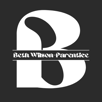Breaking Free from Self-Imposed Limits: A Guide for Founders
Break free from self-imposed limits as a founder. Discover practical steps to overcome mental barriers and unlock your brand’s full potential.
Beth Wilson- Parentice
11/11/20244 min read


Overcoming Internal Barriers as a CPG Founder
As founders, scaling a brand brings clear challenges—market competition, distribution hurdles, and constant unknowns. Yet, the most significant limits aren’t external. They are self-imposed, built by self-doubt and the “safe” narratives we cling to. Breaking free from these limits isn't solely about mindset; it's about expanding the vision for your brand and yourself.
1. Recognize and Challenge Limiting Beliefs
Often, beliefs restrict growth. Common thoughts like, “Only big brands make it to major retailers,” are limiting beliefs built on fear. Identify these mental barriers and start rewriting the story.
Action Step: List three limiting beliefs and counter each with evidence that proves otherwise. For instance, if “I lack the connections to expand,” remember times you've networked successfully, proving otherwise.
2. Reframe from Scarcity to Abundance
In the CPG world, scarcity sounds like, “There’s not enough shelf space for small brands.” Moving to an abundance mindset means recognizing market opportunities and considering unconventional approaches like direct-to-consumer (DTC) sales before retail.
Action Step: When scarcity arises in thought, reframe it. Highlight your brand’s unique value and look for alternative ways to engage the market.
3. Celebrate Small Wins
Big wins matter, but often, it’s the small consistent steps that create a solid foundation for success. Small achievements reinforce that growth is happening.
Action Step: Maintain a “Small Wins” journal. Track every step forward, whether securing a regional distributor or landing a local store partnership. Revisit this record regularly for motivation.
4. Build a Support Network
Isolation is common for founders, especially those bootstrapping their businesses. Find a network of like-minded founders or consider joining an accelerator to access support and inspiration.
Action Step: Reach out to an industry peer or mentor. A simple conversation can offer new perspectives and encouragement.
5. Visualize Success
Visualization isn’t just for athletes—it’s a powerful tool for entrepreneurs. Imagine your product in a major retailer or leading a satisfied team.
Action Step: Dedicate 5-10 minutes each morning to visualize specific successes. Focus on moments that feel real to you, as this practice fuels the journey.
6. Embrace Authenticity as a Strength
Authenticity in the CPG space is a powerful asset. Your brand story is unique—don’t hesitate to share it. Whether pitching investors or connecting with customers, authenticity attracts supporters.
Action Step: Share a piece of your journey, perhaps on social media. Authentic stories resonate and build trust, drawing people who believe in your vision.
7. Reframe Failure as Feedback
Failure isn’t the end; it’s feedback. Each setback brings lessons that can guide your next step.
Action Step: Record each challenge you encounter, reflect on what you learned, and integrate these insights into future strategies.
8. Invest in Resilience-Building Activities
Resilience is about managing emotional highs and lows effectively. Embrace daily habits that build resilience, such as journaling, celebrating small wins, or mindfulness practices.
Action Step: Start a daily resilience practice, be it gratitude journaling or morning affirmations.
9. Lead with Purpose and Clarity
Founders are drawn to their purpose, and leading with it drives focus even during tough times. Your purpose is the force behind your brand, resonating with consumers who share your values.
Action Step: Revisit your brand’s purpose and ensure it aligns across all touchpoints, from product design to marketing messaging.
10. Craft and Share Your Brand Story
A compelling brand story builds loyalty. Consumers want more than just a product—they want a connection to a meaningful story. Sharing your journey, the “why” behind your brand, strengthens your relationship with customers.
Action Step: Refine your brand story, making it relatable and authentic. Share it on your website, social media, or in pitches to bring your audience into your journey.
Conclusion: Embrace Growth and Belief
As a founder, the greatest asset to your brand is you, and the only limits are those you place on yourself. By identifying and challenging these boundaries, you pave the way for a brand that doesn’t just survive but thrives. Embrace the journey, believe in your potential, and let go of what no longer serves your vision.
Manifestation Activity: Vision Board of Abundance
To support your goals:
Create a Vision Board: Include images and words that represent your brand’s growth, success, and vision.
Display it: Place it where you’ll see it daily to reconnect with your goals.
Reflect: Let the feeling of achieving those goals motivate your actions.
FAQs
1. What are self-imposed limits?
Self-imposed limits are mental or emotional barriers we set for ourselves, often out of fear or past experiences, which restrict our potential.
2. How can visualization help me as a founder?
Visualization primes your mind for success, helping you internalize and pursue your goals more passionately.
3. Why is resilience important in entrepreneurship?
Entrepreneurship is unpredictable, and resilience helps founders navigate setbacks without losing momentum.
4. How do I identify my limiting beliefs?
Reflect on recurring doubts or fears. Ask yourself if they are based on fact or assumptions, and challenge them with evidence of your capabilities.
5. How does an abundance mindset benefit my brand?
An abundance mindset helps you see opportunities rather than obstacles, fostering innovative strategies for growth.


